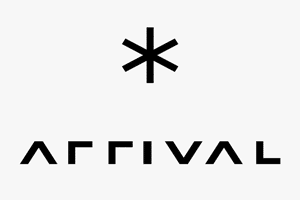Kensington Capital Acquisition Corp. V (KCGI) to Combine with Arrival in $524M Deal
Kensington V (NYSE:KCGI) has entered into a definitive agreement to combine with EV-maker Arrival (NASDAQ:ARVL) at an enterprise value of $524 million.
Luxembourg-based Arrival manufactures EV cargo delivery vehicles using proprietary micro-factory manufacturing processes. It first combined with CIIG I in March 2021.
The combined company is expected to remain trading on the Nasdaq under its existing ticker symbol when the deal is completed in the second half of 2023.
Transaction Overview
Kensington V has about $283 million in its current trust and has not yet supplemented this with other committed financing arrangements. Assuming no redemptions, Arrival expects to come out of the deal with $468 million on its balance sheet.
Public Kensington V shareholders are to exchange each SPAC share for $17-worth of newly issued Arrival shares priced at its 10-day VWAP over the 10 days preceding a point that is four days before Kensington V’s shareholder meeting to approve the deal.
Quick Takes: The eves of holidays are often used by management teams as liminal spaces where moves can be made and deals announced without much of the world noticing.
Thursday evening this week was nearly the perfect such pocket of time. It was already a day after the start of Passover and hours before Good Friday, which this year leads into not only into the Easter holiday but Spring Break for education in many places, including New York City public schools.
It was a safe bet that much of the market had already set its automatic out-of-the-office replies when the news hit. But, the deal is nonetheless interesting for SPACland for a number of reasons.
For one, it is 2023’s second repeat de-SPACing. This deal follows in the footsteps of Wejo (NASDAQ:WEJO), which also completed a 2021 SPAC deal and then announced a new one in January.
It has become increasingly clear that 2021 was a heyday of sorts for companies that were looking to raise money but were still a few years out from turning significant revenue from their businesses. When rates and inflation both rose, those that could not easily pivot to profitability were in for a reckoning.
In Wejo’s case, this came in the form of a second SPAC deal that slashed it down -84.7% from its first SPAC deal’s valuation. Granted, the pubic markets had already done plenty of de-valuing on its own in the interim.
This situation has been mirrored in Arrival, although it enjoyed enough post-close initial success that it was able to call for a cash redemption of its warrants after just a few months as a public company as it had been trading steadily above $18.
But, production delays and increasing signals that it lacked the capital to reach its key commercialization milestones had driven its share price down to $0.13 at the time this deal was announced. Its valuation reset has meanwhile been similar to Wejo’s, with this deal assuming a $524 million enterprise value at $0.13 per share, -90% down from its price tag in the CIIG deal.
But the question remains whether Arrival will be able to grasp the stars reached for in this first combination. The company had always set out a more ambitious path for itself than was perhaps needed. It aims to not only be a major supplier of EV vans and buses to municipal and commercial fleets, but to revolutionize both vehicle design and production processes.
While most new EV-makers have outsourced at least some portion of their component design and manufacturing to third parties, Arrival has sought to bring this all under its roof. It hopes to make its vehicles at largely automated micro-factories that would build the specific models needed for nearby markets.
The company was also initially chasing multiple market segments at once – vans, buses and cars – but it appears to have put all but the former on the back burner for now as it seeks to make good on the nearest-term sales it can gather. The cost of that unfocused approach rang up to loss of about -$1 billion and EBITDA loss of about -$380 million for 2022.
But, Arrival’s Bicester, UK factory is up and running producing its L Van design. The company expects to accumulate 250,000 kilometers (155,343 miles) of test and operational milage on those vans by the end of 2023.
Arrival’s focus is now to get those vans driving on the other side of the road, however. Arrival’s first big contract was a 10,000 van-order that parcel carrier UPS (NYSE:UPS) first placed in 2020. This is to be made up of both L Vans and the XL Van model that the company plans to largely produce at a factory in Charlotte, North Carolina.
Production at the Charlotte facility was supposed to begin this year, but the company now expects to launch production there by the end of 2024.
In the meantime, Kensington V shareholders are effectively getting shares in that vision at a 70% discount – about 139 Arrival shares per SPAC share at its last closing price. So far, the market likes the SPAC side of the deal more, with Kensington V up about +7.7% in afterhours trading while Arrival is up +2.5%.
As for whether 2023 will see more repeat SPAC deals, as they say: two’s a line, three’s a trend.
Conditions continue to exist where such transactions could make sense. On one end of the dance floor are 286 SPACs searching for a target and on the other are 329 companies that completed de-SPACs since the beginning of 2021, some portion of which are likely hurting for more capital.
But, as Wejo CEO Richard Barlow told the SPACInsider Podcast in February, “This is not for the faint hearted.”
ADVISORS
- Hughes Hubbard & Reed LLP is serving as legal advisor to Kensington.
- Teneo is serving as financial advisor to Arrival.
- Linklaters LLP is serving as legal advisor to Arrival.

